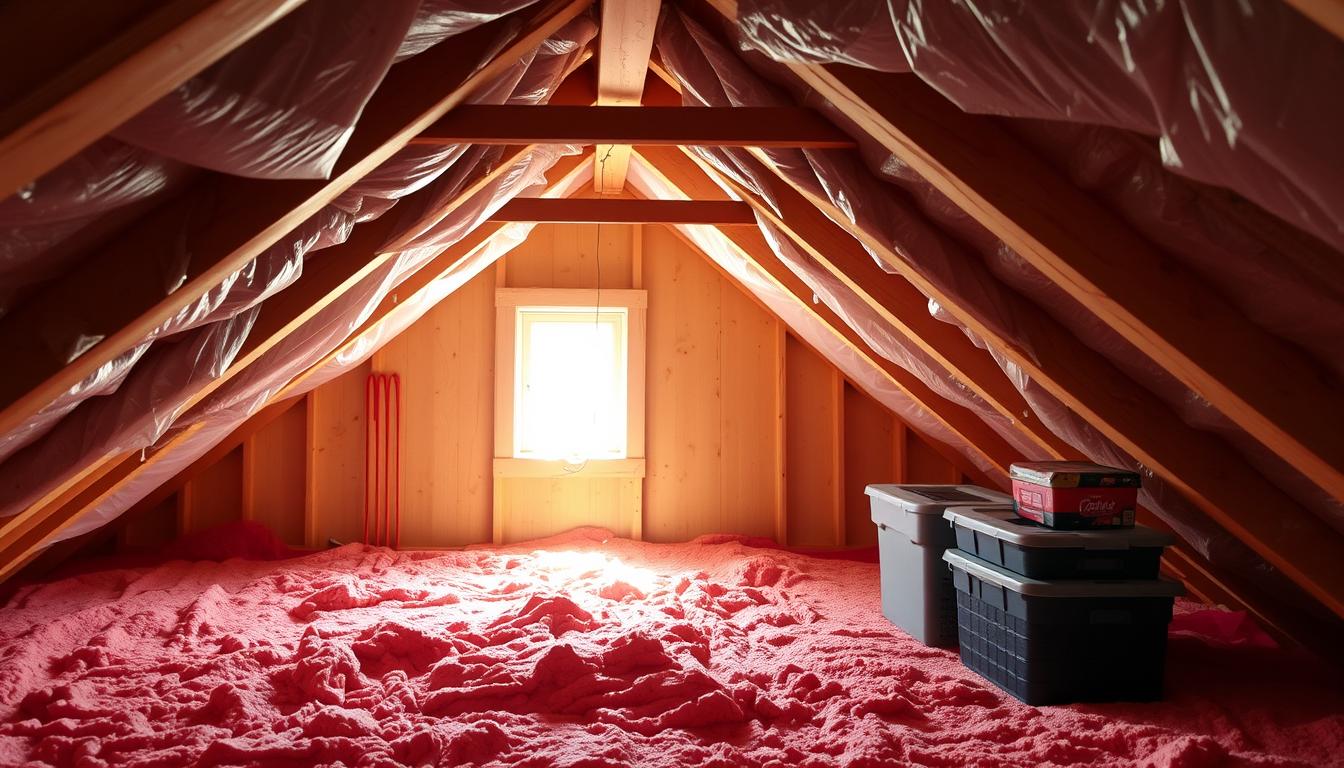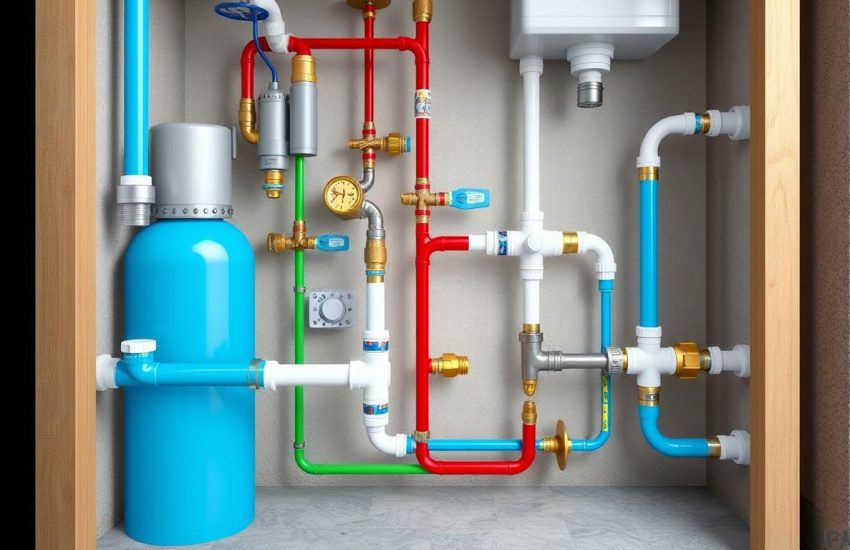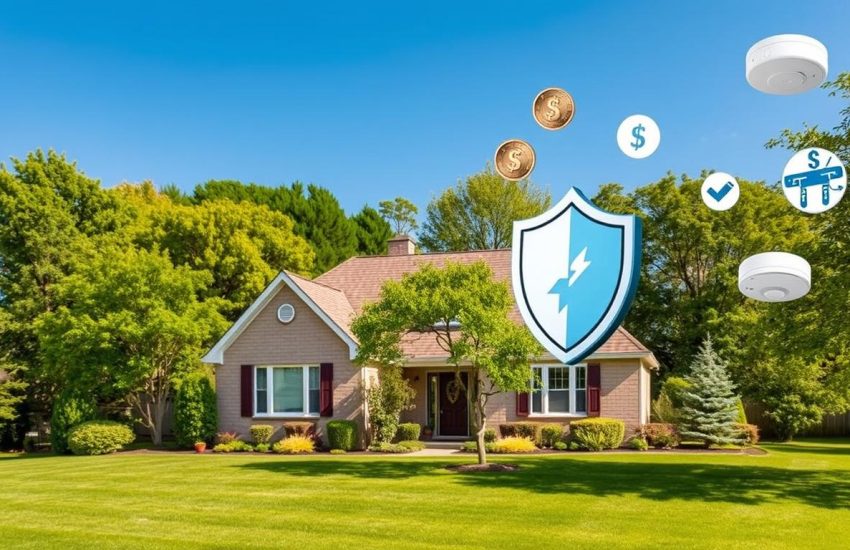Attic Insulation: A Complete Guide for Homeowners
Attic insulation might not seem important at first. But it’s essential for keeping your home warm and efficient. About 90% of homes in the U.S. don’t have enough of it. This fact raises questions about comfort, saving money, and taking care of our planet.
Attic insulation is more than just a layer in your attic. It’s like an invisible shield. It can help lower your bills and be kinder to the environment. Adding proper insulation is an investment. It can pay off hugely, sometimes more than 100%. Yet, 35% of home energy is wasted because many homes lack this.
Your attic could help you save a lot on energy. But you need the right insulation material and should understand R-value. This guide will help you improve your home improvement and make your attic a hero of energy efficiency.
Key Takeaways
- Understanding the impact of attic insulation on energy conservation and cost savings.
- The significance of the R-value in relation to climate zones and insulation material effectiveness.
- Identifying key signs that your attic may be under-insulated.
- Insight into historical energy efficiency measures and their relevance to contemporary home construction.
- Cost-benefit analysis of attic insulation upgrades, including potential returns on investment.
- How retrofitting with the correct insulation can significantly improve home energy efficiency.
Why Focus on Attic Insulation?
Attic insulation is key for home energy efficiency and comfort all year. By insulating your attic, you save on energy bills. This also helps your home last longer, especially the roof and HVAC system.
Energy reports show that bad attic insulation can lose up to 35% of energy. This means you can save up to 50% on heating and cooling costs. That’s according to the Department of Energy. It also means heating and air units work less hard.
Good attic insulation helps your roof and inside of your home too. It stops problems like ice dams and lessens condensation. These issues can harm your roof over time. Building codes and material suppliers stress the need for proper attic ventilation for roof health.
| Benefit | Details |
|---|---|
| Energy Savings | Prevents up to 45% of home energy waste, significantly cutting utility bills. |
| Roof Protection | Helps maintain condition of the roof by preventing weather-related damages. |
| Enhanced Comfort | Improves indoor temperature stability, resulting in a more comfortable living environment. |
Attic insulation also boosts HVAC system effectiveness. Furnaces and air conditioners work better with less strain. This means more energy savings and lower maintenance costs over time.
Choosing the right insulation type is important. Options like fiberglass, cellulose, or polyisocyanurate vary in heat resistance. The R-value measures this resistance. Picking the right R-value for your area is crucial for saving energy and improving comfort.
For the best results, pair insulation with air sealing in your attic. This stops air leaks that waste energy. Insulation and sealing improve home energy efficiency. They also make your home cooler in summer and warmer in winter. So, focusing on attic insulation is a smart move for all homeowners.
DIY vs Professional Help
Choosing between DIY attic insulation and getting pro help is big for homeowners. Many like the idea of cheaper attic insulation by doing it themselves. Yet, using a pro can mean better safety and effectiveness.
DIY attic insulation might save money at first. You could spend $150 to $700 on materials. But, doing it wrong can lead to less efficiency and dangers.
DIYers may overlook the need for special tools and knowledge. Older homes may have harmful materials like asbestos. Professionals know how to deal with these safely. They follow building codes, avoiding fines and rework.
Pros offer warranties and insurance, which protects homeowners. Here’s a look at the costs and savings:
| Type of Insulation | DIY Cost | Professional Installation | Time Savings |
|---|---|---|---|
| Fiberglass (Batt and Roll) | $150 – $700 | $1,000 – $2,400 | Professional installation is faster |
| Blown Insulation | Approx. $500 | Better handled by professionals | Significant, especially for large areas |
| Safety and Compliance | Risky if untrained | Guaranteed by professionals | Peace of mind |
Choosing DIY attic insulation could mean initial savings. Yet, the benefits of hiring pros—like saving energy, more home value, and safety—are important. For more tips on home project savings, weigh the costs and benefits carefully.
In the end, deciding to DIY or hire pros depends on your attic, your DIY skills, and understanding long-term home costs.
How to Save Money
Want to cut down on your energy bills? Better attic insulation might be your answer. It helps with energy efficiency and saves money over time. Using affordable attic insulation methods will help you save on insulation costs. It also keeps your home comfy all year.
Upgrading your attic insulation has big benefits. It can save on heating and cooling costs. The Environmental Protection Agency (EPA) says homeowners can save about 15% on these bills. With the average yearly cost at $1380, that’s more than $200 saved each year. More savings come when you insulate roofs, walls, windows, and floors better.
- Roof insulation should be between R-30 and R-60 for the best energy savings.
- Putting fiberglass insulation in the attic walls helps keep outside temperatures at bay.
- Sealing attic window leaks boosts insulation and cuts down on drafts and energy loss.
- Insulating attic floors helps keep your home’s temperature steady, saving on heating or cooling.
Many homes in the US need better insulation. Improving your attic’s insulation can also bump up your home’s value. Homeowners often get back more than what they spent on the project, according to Remodeling Magazine’s Cost vs. Value Analysis.
For safety and top energy efficiency, use fire barriers and keep away from IC-rated lights. Adding baffles in your attic helps keep it cool and protects your insulation.
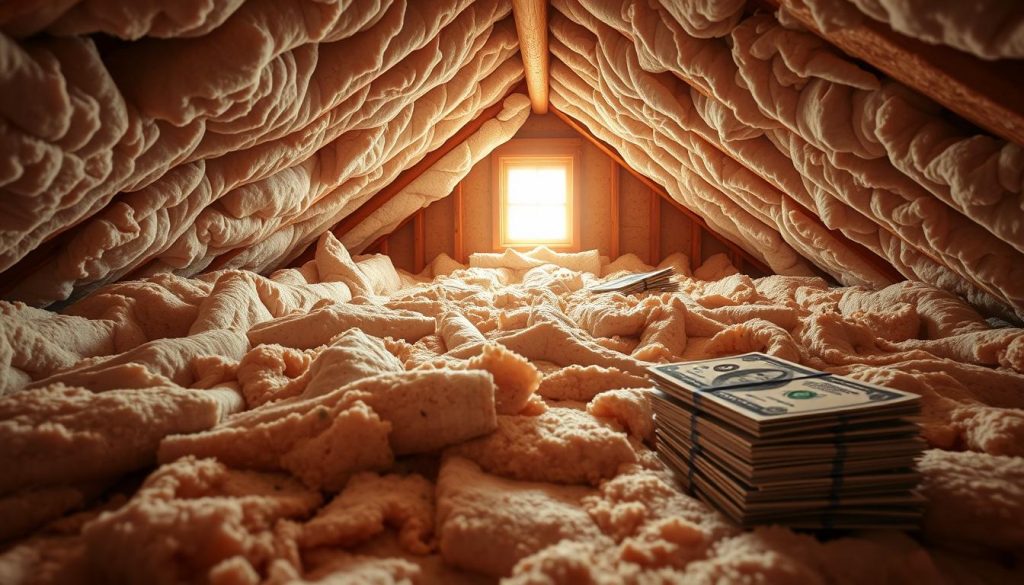
The initial cost of upgrading insulation might seem a lot. But, the savings you get in the long run are clear. With the right installation and materials, you’ll see great energy and cost savings. Homeowners looking into this can learn more about HVAC inspections here. A well-kept system adds to the benefits of new insulation.
Choosing affordable attic insulation is a smart home investment. It promises comfort, sustainability, and savings. Plus, it’s good for our planet. Think about making your home more insulated and efficient today.
Step-by-Step Upgrades
To get better energy efficiency, follow steps for attic insulation upgrades. It helps keep your home warm and meets your home improvement goals.
First, check your attic for any damage or old insulation. This early step is key for planning what you need next. You can tell you have bad insulation if your home has uneven heat, an icy roof in winter, or high energy bills.
| Assessment Findings | Recommended Actions |
|---|---|
| Deteriorated Insulation | Remove old materials, prepare for new insulation |
| Inadequate Insulation (under R-19) | Enhance to at least R-38 for best results |
| Air Leaks | Seal all gaps with caulk or foam |
| Pre-1990 Construction | Check for asbestos, replace if present |
Know about R-value; it shows how well insulation stops heat flow. Aim for an R-value of 38 for most attics. This is about 15-16 inches of certain insulation materials.
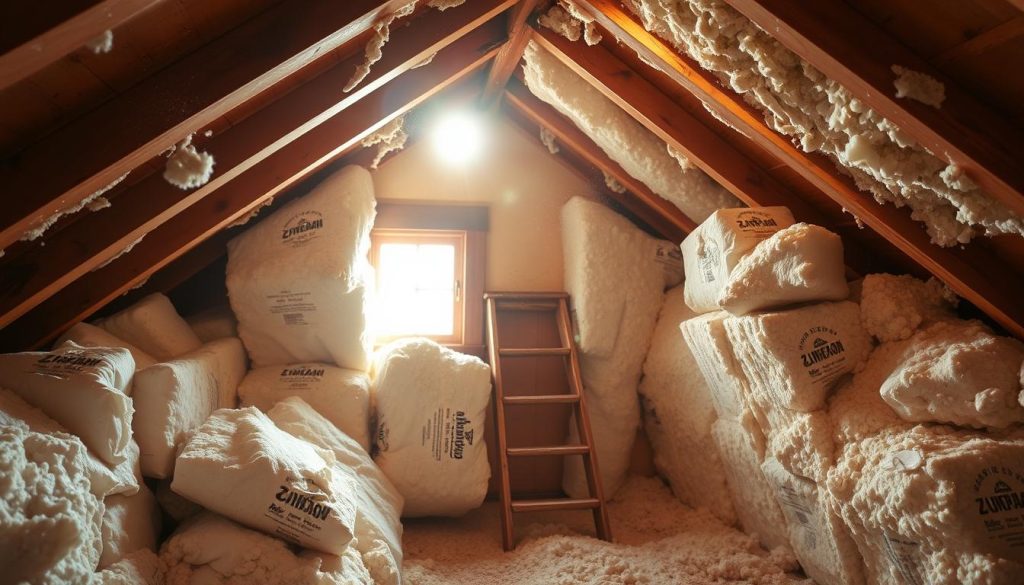
Picking the right insulation type is key. You have options like fiberglass, cellulose, or foam. They all fight heat loss differently but are good for the planet. For those who like DIY, cellulose or fiberglass are easy to install and cover well.
Install carefully to keep insulation fluffy. It works best this way. Always wear protective gear like goggles and masks, especially with fiberglass. It might irritate your skin and lungs.
Don’t forget about airflow. Bad ventilation can cause moisture issues. This might hurt your new insulation and your home’s structure.
By doing these steps, you can lower your energy costs. Plus, your home becomes more comfortable. So, attic insulation upgrades are a smart move for home improvement.
Final Tips for Success
When finishing your attic insulation project, picking the right product is crucial. R-values vary, so match them to your climate. In cold places like Northern U.S., high R-values (R-49 to R-60) are needed. Warmer areas do well with R-30 insulation.
Knowing about insulation materials can save you money. Fiberglass is cheap and works for moderate climates. It has an R-value of R-3.2 to R-3.8 per inch. Cellulose insulation has an R-value of R-3.7 per inch. It’s good for old homes and is eco-friendly. Prices range from $0.30 to $7.00 per square foot. Planning helps save money and gets good thermal performance.
Efficient upgrades need good ventilation to stop moisture and mold. Moisture can harm your house and health. Avoid “truck and ladder” services without good reputations. Choose experts who guarantee their work. This way, you save energy, live comfortably, and your attic stays well-insulated for a long time.

